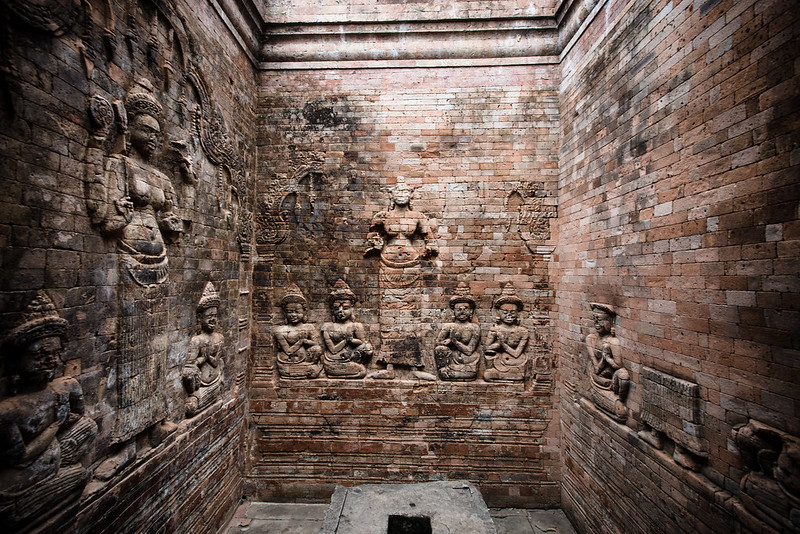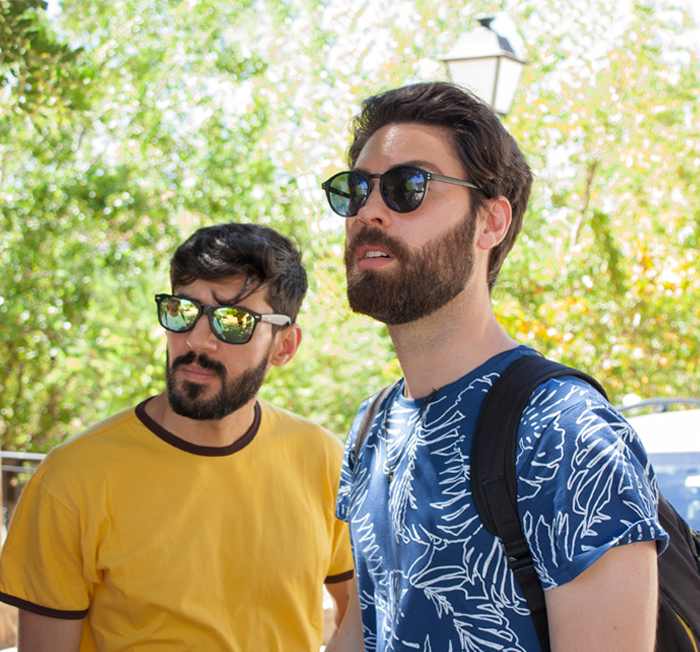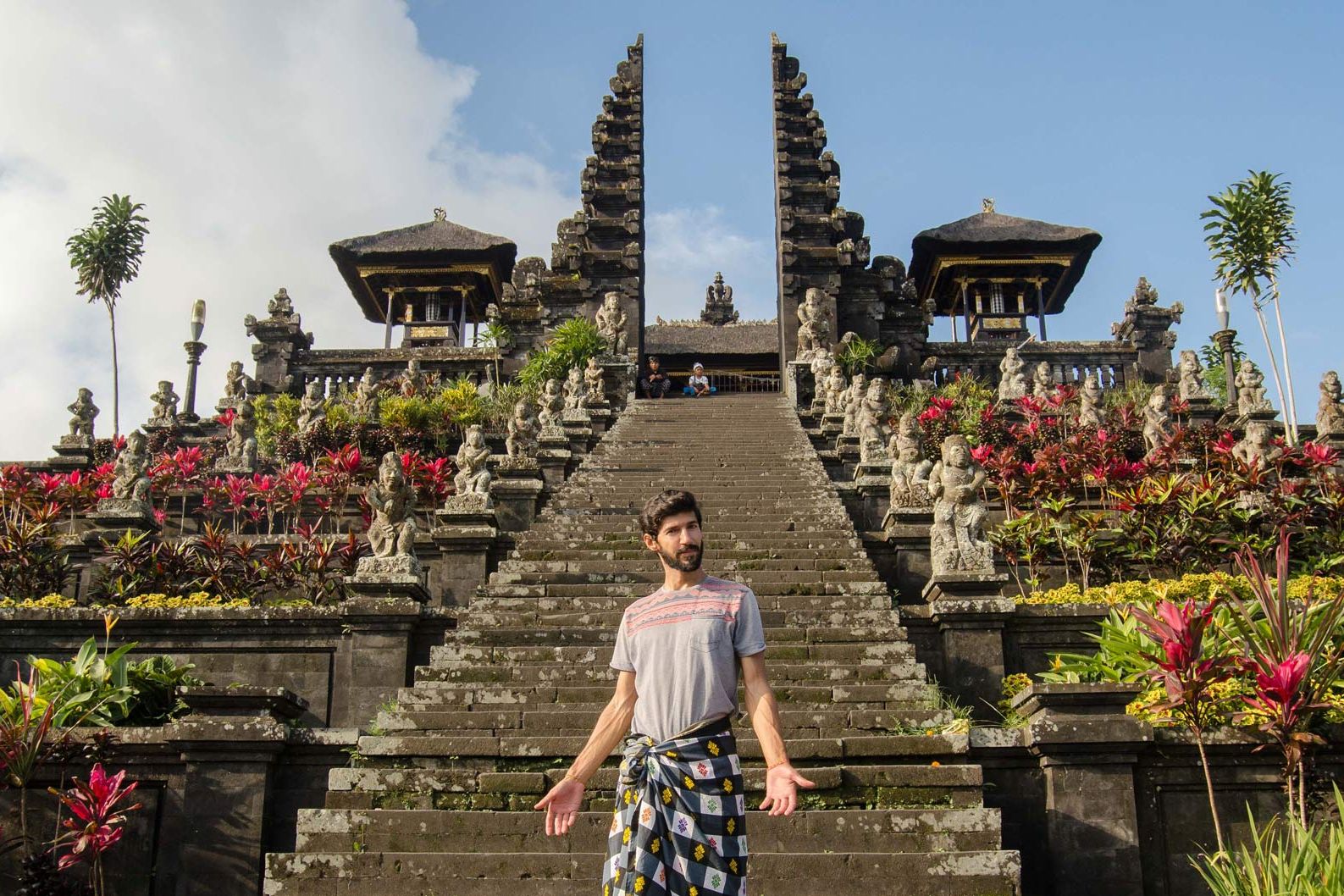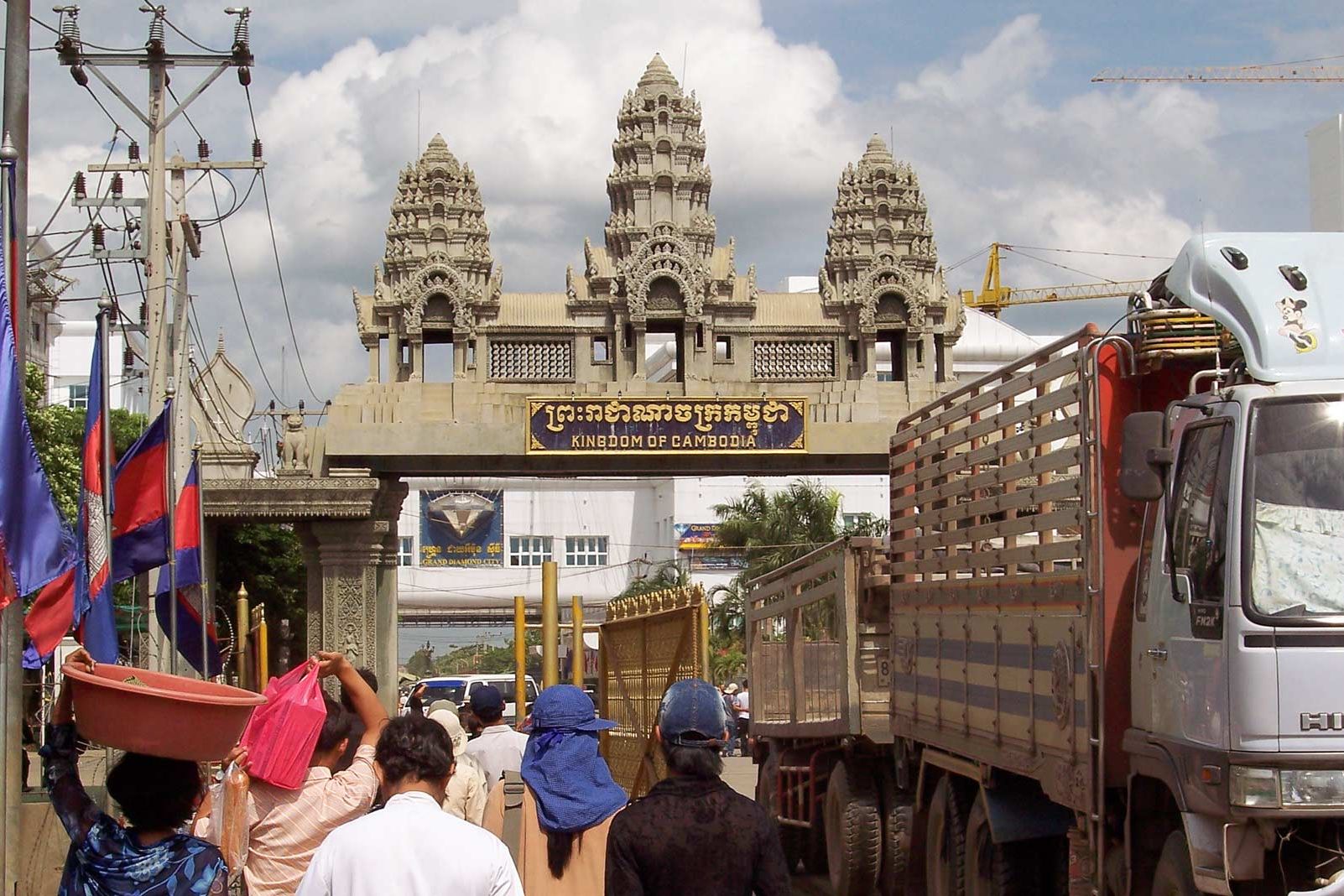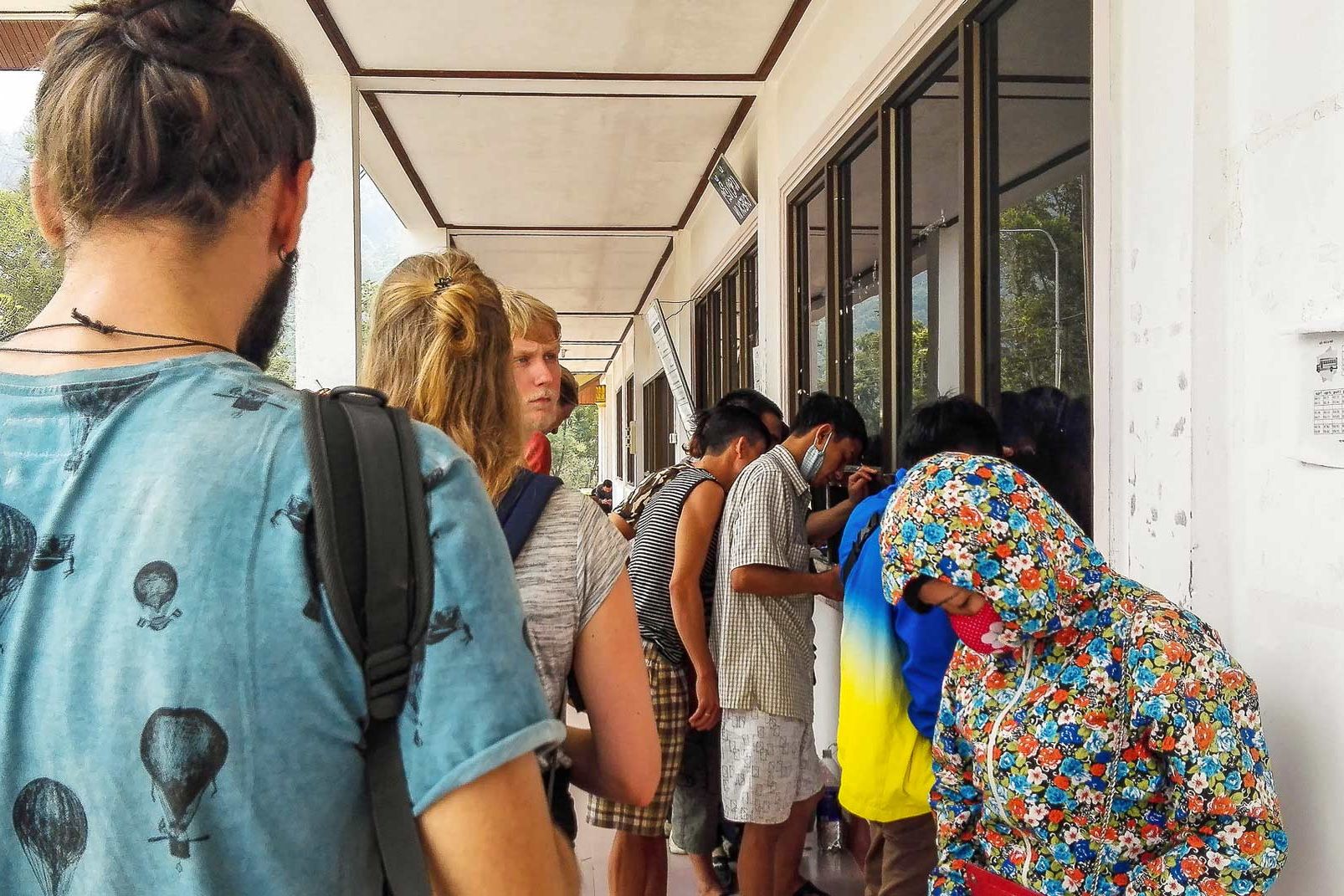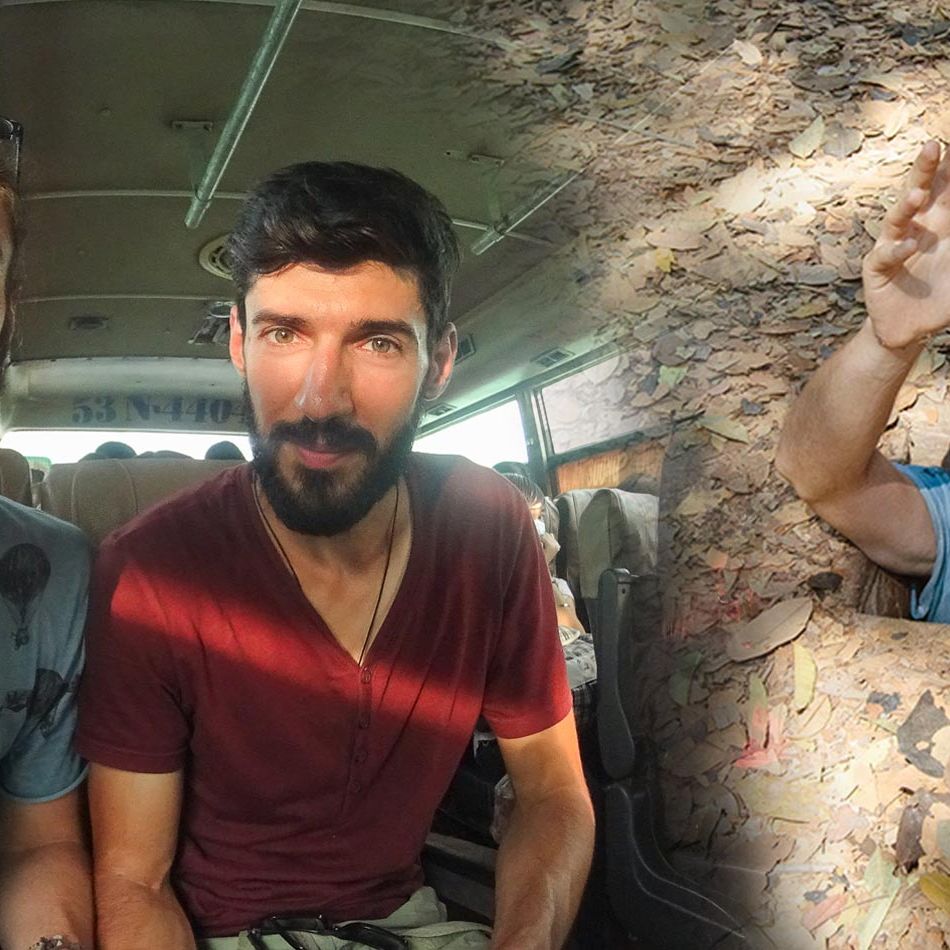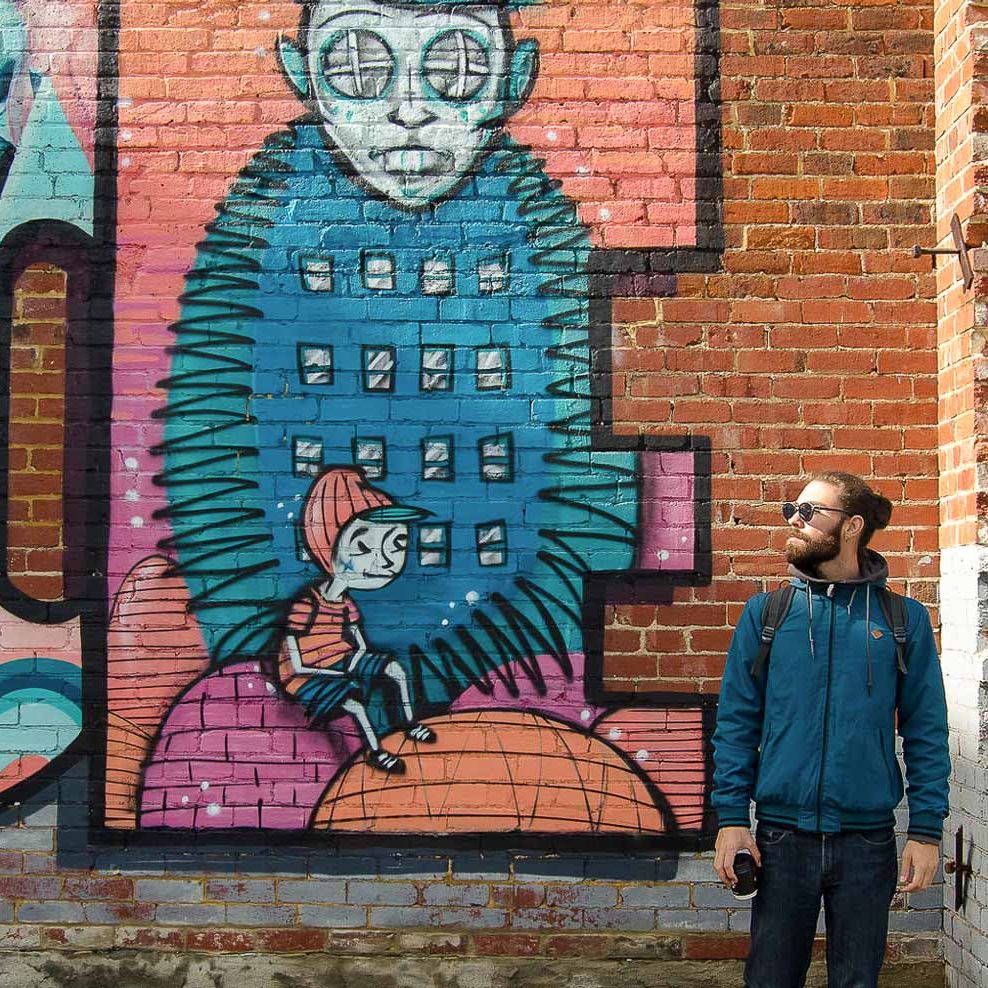If you want to explore the Angkor Temples, the city of Siem Reap will be your starting point. Here’s where you’ll find different transport options to visit the Angkor Archaeological Park at different price ranges:
• You can do it by yourself on a bicycle (US$3 a day)
• On a motorbike,
• In a group tour,
• Or by tuk-tuk (US$25 for a whole day, granting you a ride to all the main temples and back to Siem Reap). But just so you know, we saw a girl making a big scene after realizing her tuk-tuk abandoned her in one of the temples.
If you want to know more about the city go over to Siem Reap for First-Timers (What to Expect).
Choosing the Bicycle
Renting 2 bikes for 2 days cost us US$6.
Best decision EVER. We got to feel the warm breeze in our faces, the smell of the forest, and the freedom of stopping where we wanted for as long as we felt like. *Ahhh…*
All the Angkor temples are inside a beautiful and very well maintained park, with huge trees and vast vegetation where insects sing from. Locals come here to relax, swim and have picnics on the weekends.
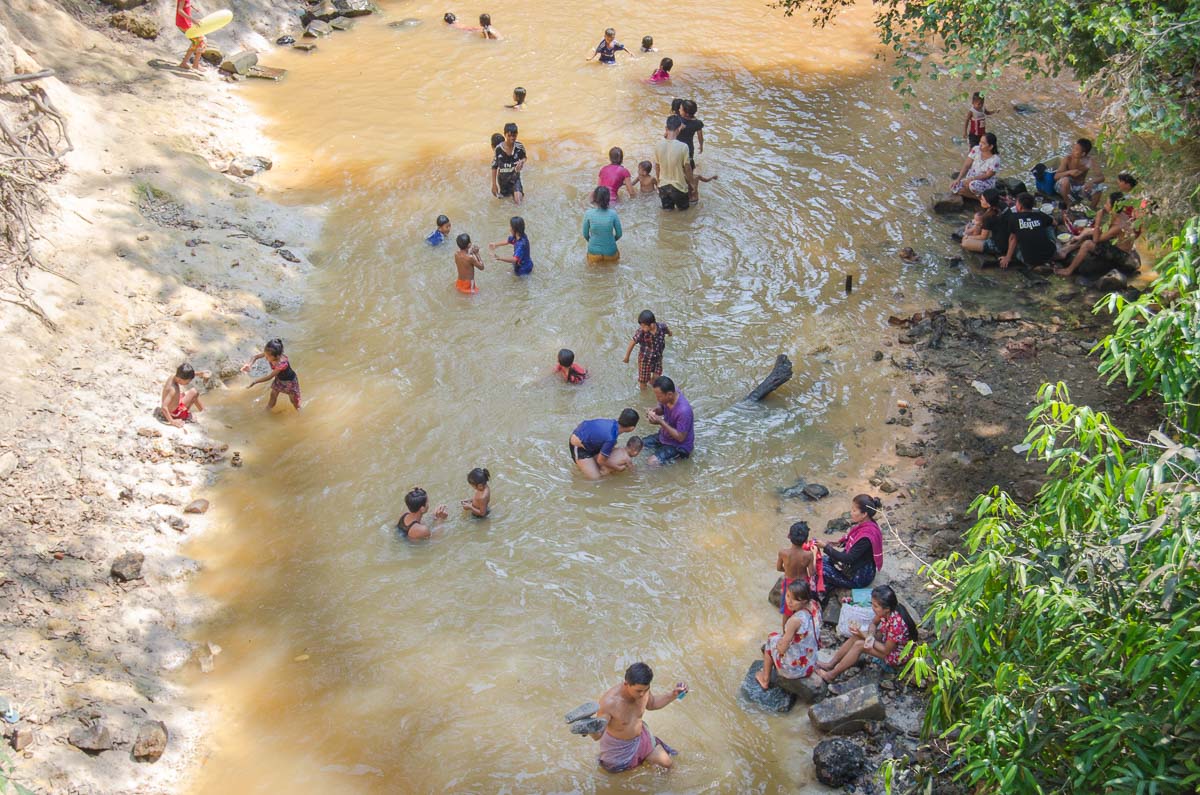
After 35 minutes through a long straight road, we arrived at the Angkor Archaeological Park and purchased our 3-day passes.
Angkor Admission Passes (2020)
7-day pass: US$72
3-day pass: US$62
1-day pass: US$37
Children under 12 years old are not required to purchase an entrance ticket but a passport needs to be shown as proof of age.
At the counter, you’ll have a photo taken and be given a pass/visiting card that you must carry at all times. Every day, as you enter the park a guard will check it. (That same guard also tried to sell us a tuk-tuk ride, even though we were on bicycles: “No problem my friends, put the bicycles in the tuk-tuk as well”). 😑
After cycling for 15 more minutes, we arrived at Prasat Kravan, a small temple made of three red-ish brick towers and surrounded by a dried moat. The temple is in pretty bad shape but is still possible to see the bas-reliefs dedicated to Vishnu.
Reaching Banteay Kdei, the second temple, took another 15 minutes. The temple is surrounded by a wall, like most of them are. We got in through a narrow and detailed doorway and walked along a stone road before reaching the main building. Parts of the building have collapsed, but most of it is visitable. Nowadays the fallen stones are organized in piles (for inventory) and several walls are now supported by iron and wooden beams.
The work behind all of this is mind-blowing: the transportation of raw material, the skilled men that cut the stone to fit impeccably together, and the intricate sculpture work throughout the building…wow.
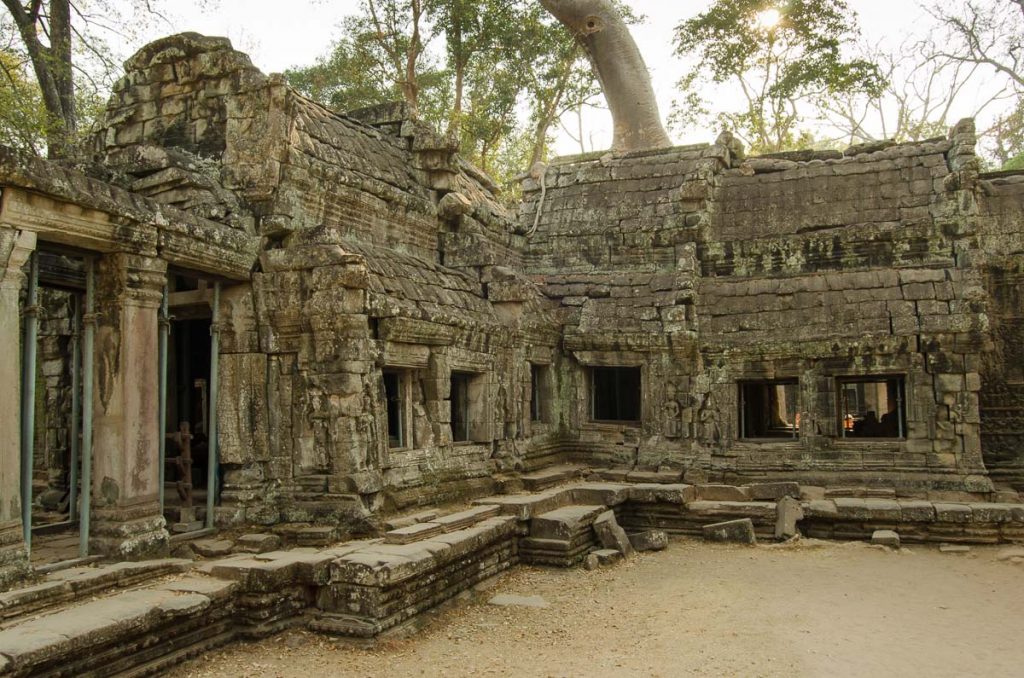
The Angkor Temples are considered religious sites as well: you’ll find many Buddha statues decorated with gold and orange cloths, with incense and offerings laying at their feet. It’s great to see that the temples are still alive and serving a purpose besides being a visiting site for tourists.
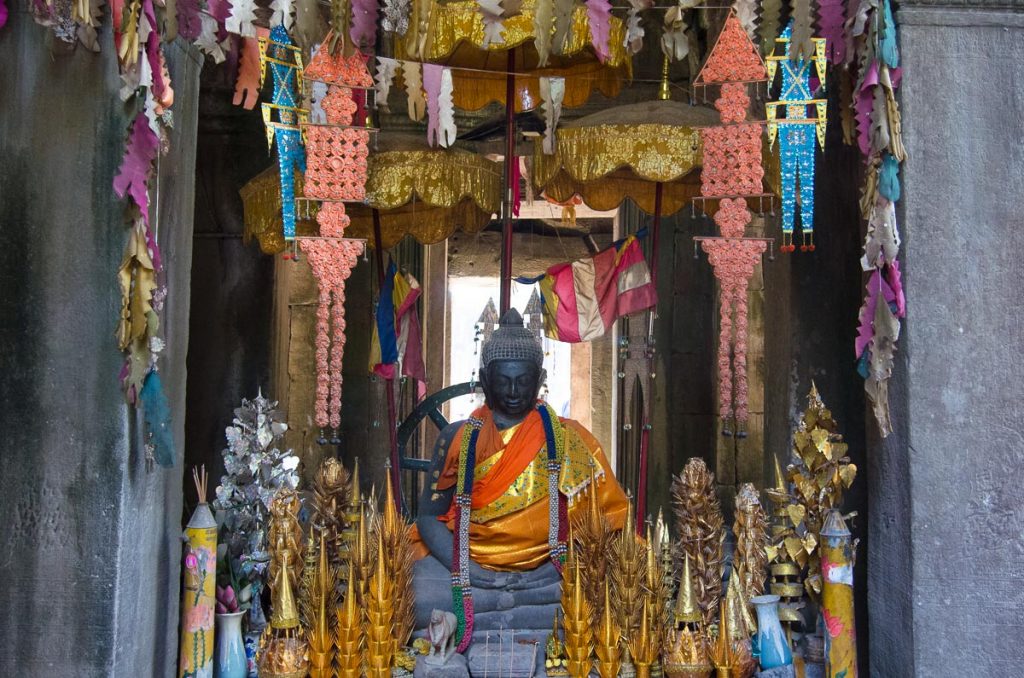
In front of Banteay Kdei is an enormous lake called Sra Srang. The lake was used by the crowned heads back in the day, for bathing and playscape — basically a bathtub to fit their egos.
Eating on the Archaeological Park
We’ve come to realize that when tourists are having lunch is when you’ll have a better experience in famous tourist sites. So as we usually do when visiting this type of monument, we only stopped for lunch around 4 pm.
At the temple complex, food and drinks are way more expensive than in Siem Reap (four times more expensive) so be prepared and stock up!
Ta Prohm
After lunch, we headed to Ta Prohm, one of the most recognized temples due to the Tomb Raider movies. Here, nature took back the place. Giant trees with a magical golden bark grew on top and around the walls finding a beautiful balance between weight and support. No one knows who’s holding whom. Pure magic.
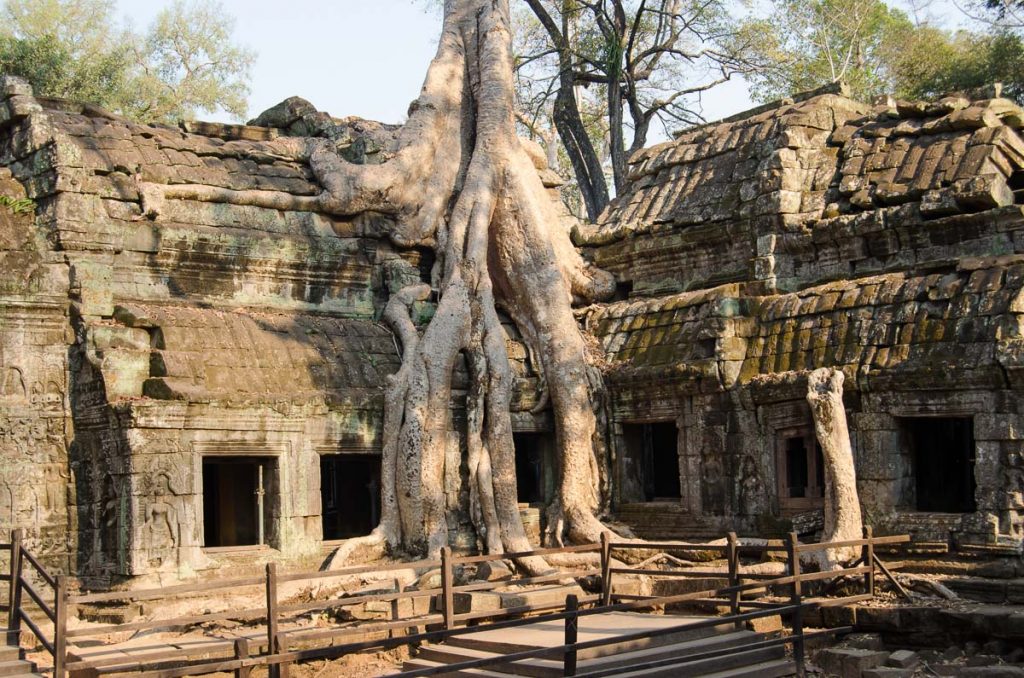
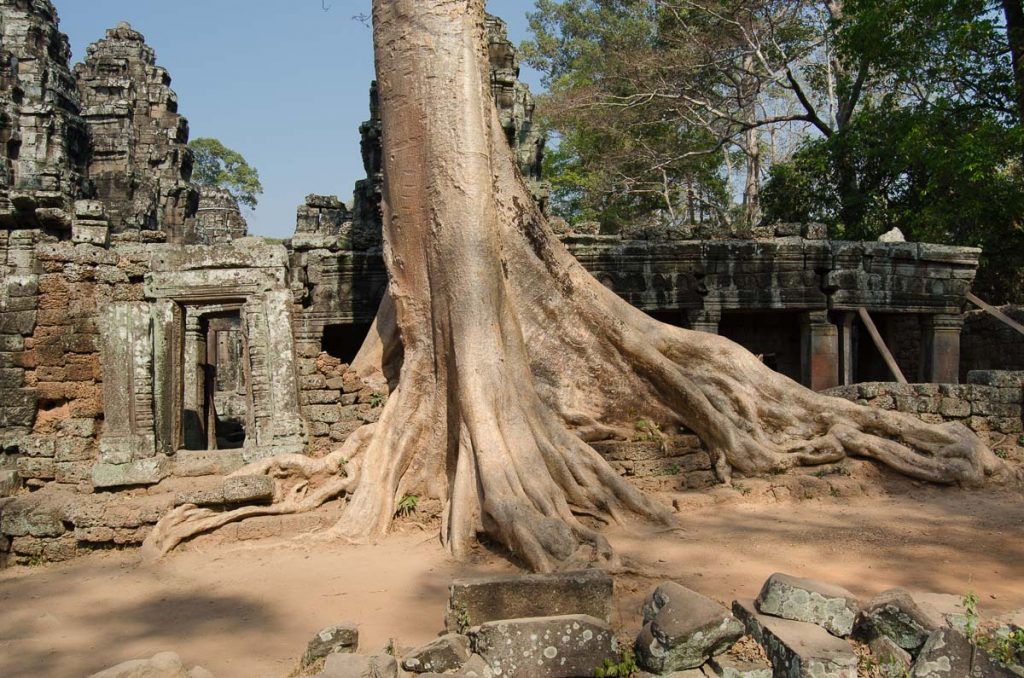

By 5:30 PM we headed back to the city. The park closes at 5:30 PM.
Most temples in the park can be visited from 7:30 AM – 5:30 PM (except for Phnom Bakheng and Pre Rup that close at 7:00 PM).
The Second Day Visiting the Temples of Angkor
The second day as we biked to the park, a bunch of monkeys welcomed us by the road, it was our first time seeing monkeys on the loose like that.
We knew it was going to be a great day, we’ve just been greeted by monkeys and we were about to visit the BIGGEST TEMPLE IN THE WORLD: Angkor Wat.
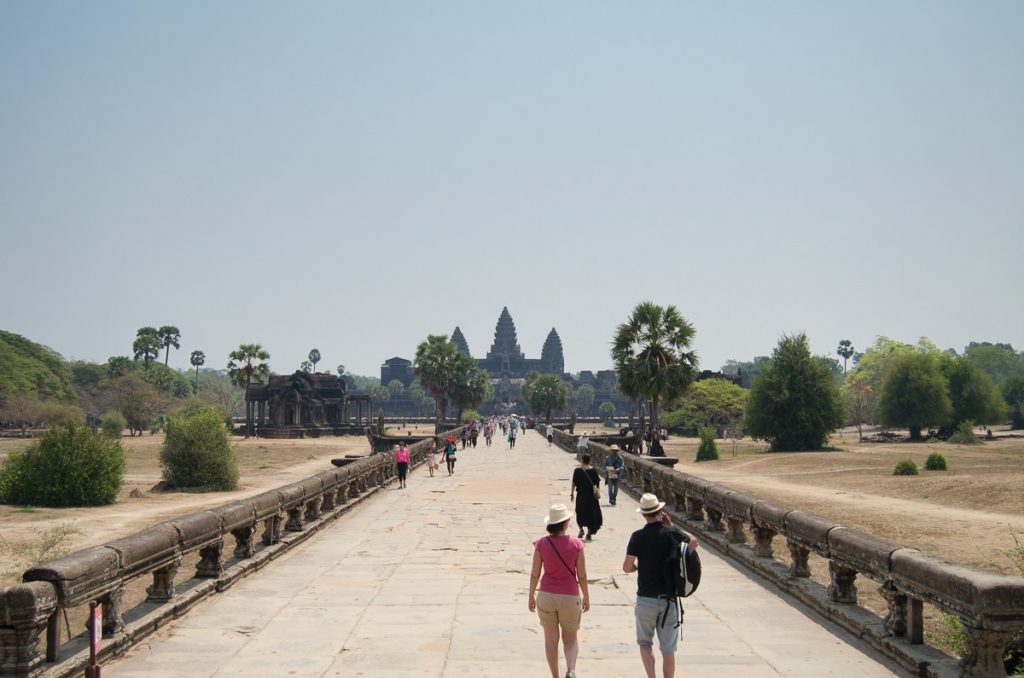
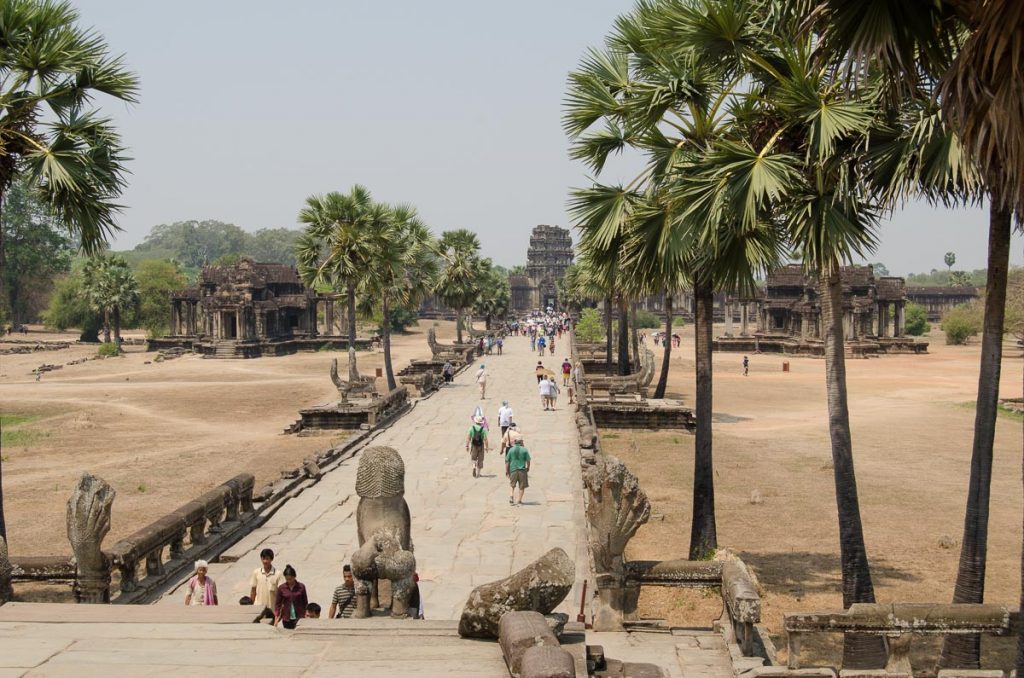
Surrounding Angkor Wat is a moat the size of a river and the only way to reach the temple is through a stone passage. At the start of this passage was a frenzy of people, locals, tourists, tuk-tuks, buses, and food carts. Funny how we thought we would be first to arrive…

As soon as our eyes got through the wall of people and faced Angkor Wat in all its glory, bathed by the morning light, we got chills. Wow! Just as seen on TV.
But after visiting the interior of the temple, we can say that Angkor Wat is kind of overrated. Yes, it is the largest and the tallest, and once you climb its central section the view of the park is epic. But that’s pretty much it.
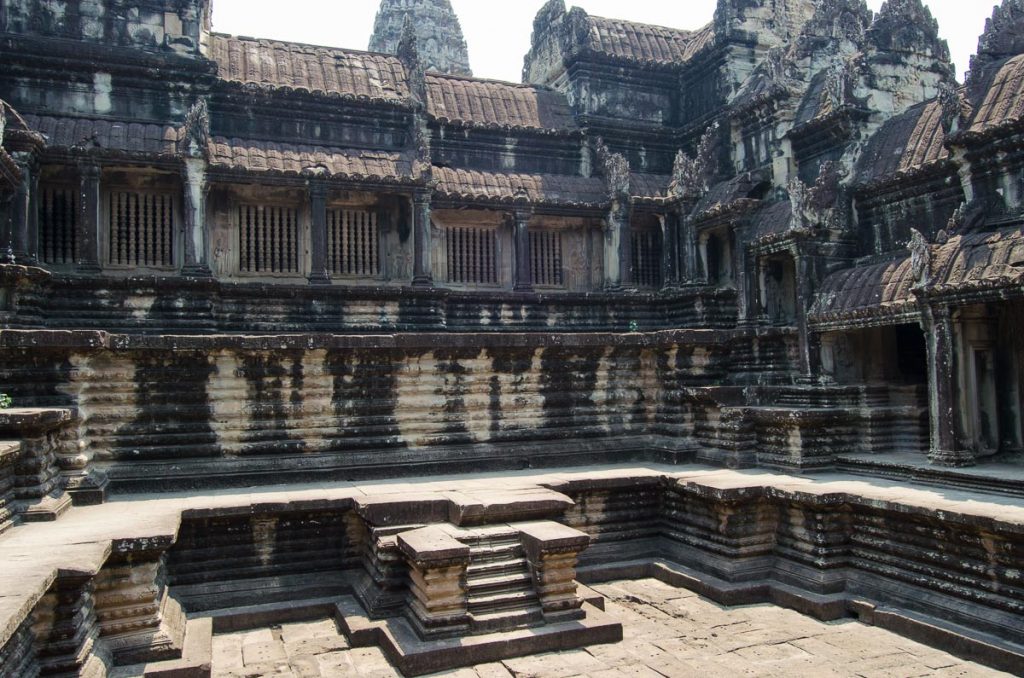
There are smaller temples with better sculptural detail and a magical ‘je ne sais quoi’ that we didn’t feel in Angkor Wat. It felt a bit sterile and dry compared to other temples that time managed to marry with nature.
After having lunch at one of the restaurants by Angkor Wat, we biked under severe heat to the old town of Angkor Thom: it’s a giant walled area with several temples inside. The north and south entrances are flanked by imposing statues of men battling demons.

Minutes after passing the entrance, we arrived at other of the most recognized temples in Siem Reap: Bayon. It’s the one with many faces — 216 to be exact — built by a king that wanted his face sculpted everywhere to impose respect from anyone observing the temple. Other amazing features are the extensive, well-conserved bas-reliefs walls portraying stories of battles and Khmer’s everyday life.
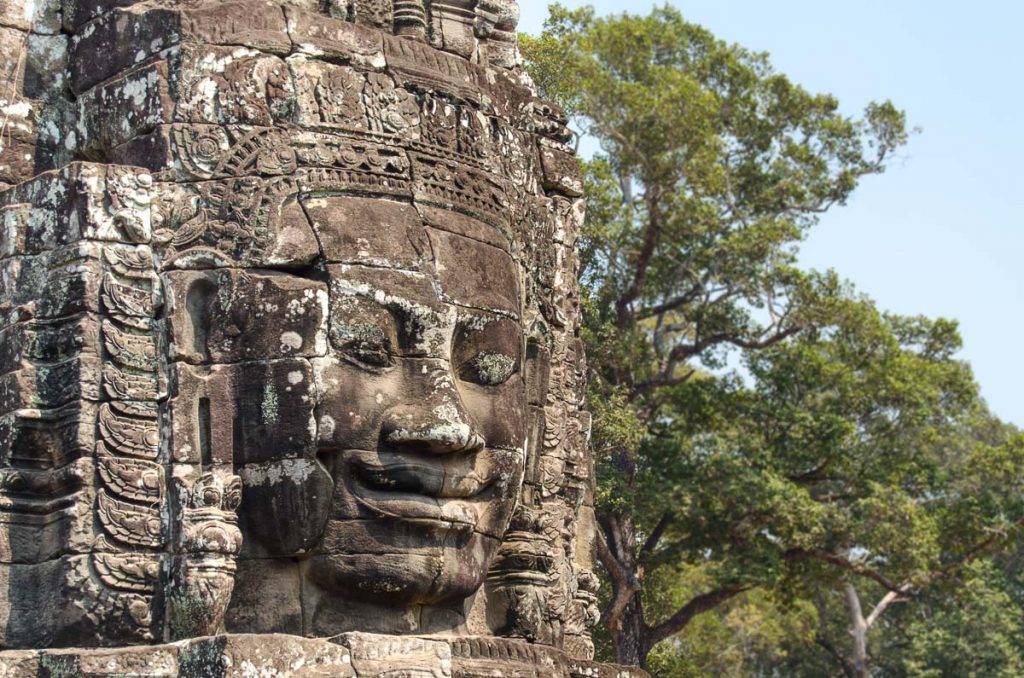
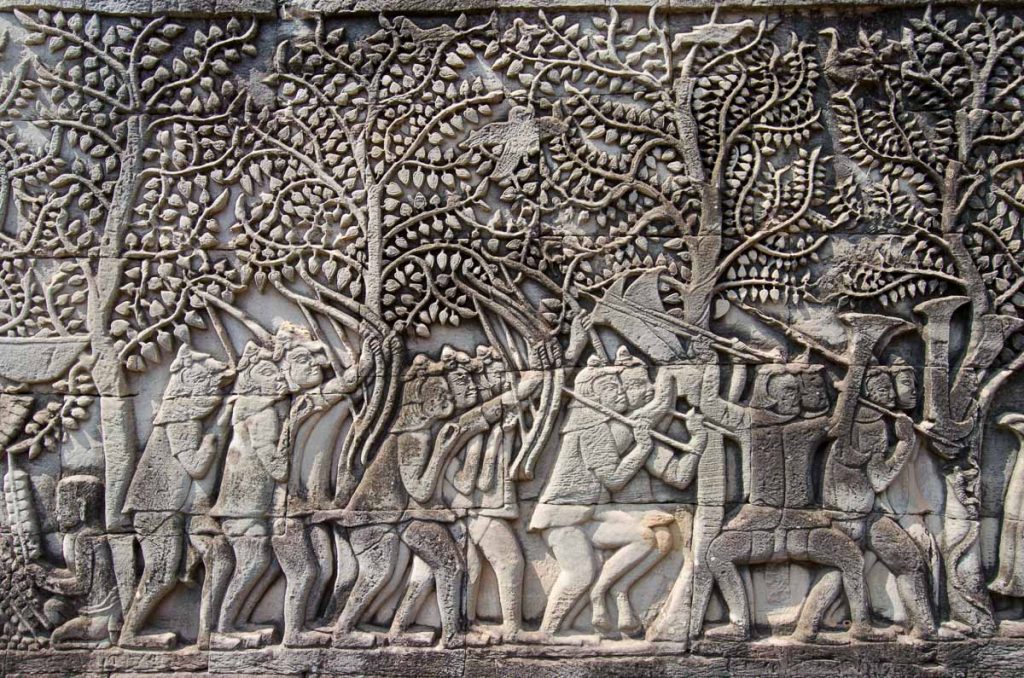
To the left of Bayon is the Baphuon temple in which we didn’t get in. The fatigue and the heat dissuaded us from climbing the 5 or 6-meter platform where the temple seems to be built on.
To be honest, we were feeling ‘templed out’ and regretting choosing a bike as transportation. Just the thought of all those kilometers ahead of us made us want to cry.
We decided to sit in a shaded spot and rest our sore legs.
Accepting the pain and keep going
Back on the bikes, we got to an open space with trees and the ruins of twelve towers. On one side was Prasat Suor Prat, and on the other was the Terrace of the Elephants. The terrace is a 3-meter-high platform used way back when for royal ceremonies and military parades.
We left Angkor Thom and headed to the temple Preah Khan: it once served as a town, temple, and Buddhist university. The restoration work in Preah Khan was minimum, being purposefully left as it was found.
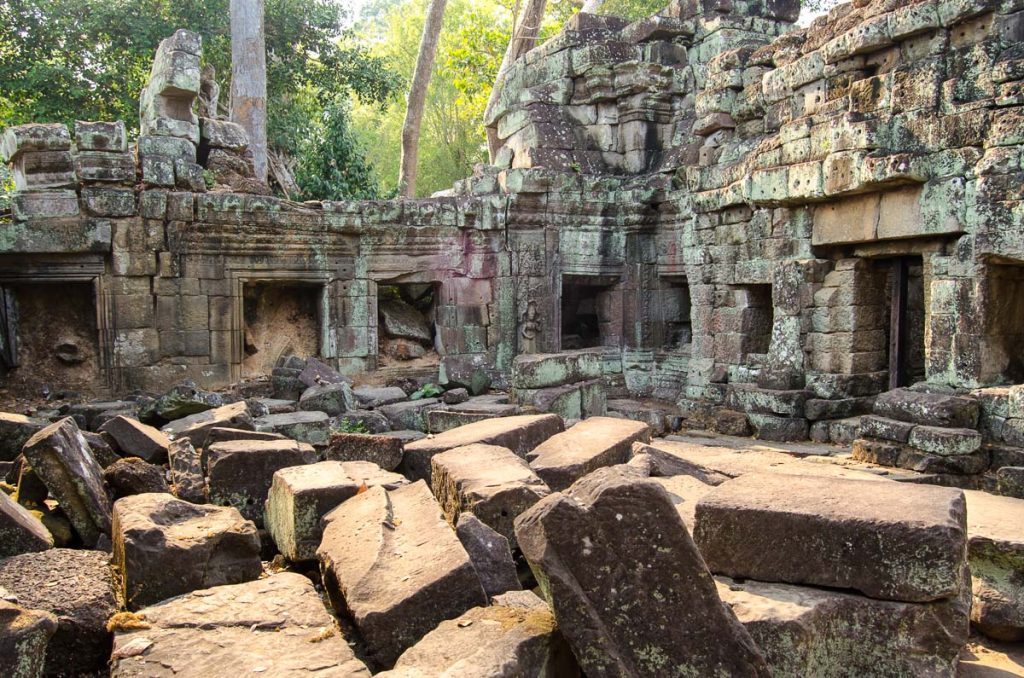
The bike ride back to our hotel was actually great. It gave us time to reflect and absorb what we’ve had witnessed and to say goodbye to Angkor as the sun went down. What an amazing experience: two full days witnessing epic history and actualized human badassery that will certainly remain in our hearts forever. Way longer than the pain in our legs.
Angkor travel expenses (Daily average for 1 person)
Meals: 3,77€
Water: 0,87€
Bicycles: 1,33€
3-day pass: US$62
If you have any questions or some extra info everybody can benefit from, please leave it in the comments!
RELATED POSTS
September 17, 2023
Crossing Vietnam – Laos borders overland
Laos Visa on Arrival (2023 update) According to feedback from some fellow travelers in 2023, it has not been possible to get a…

